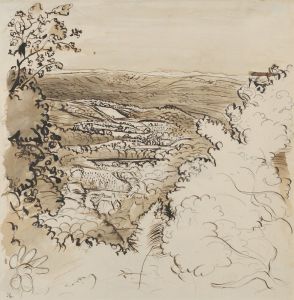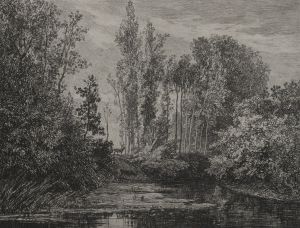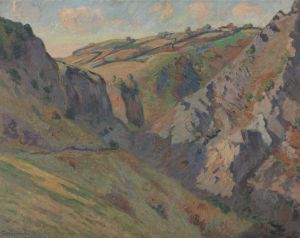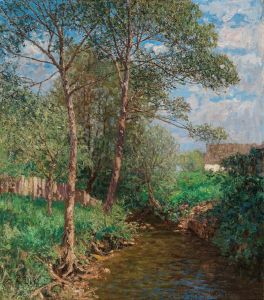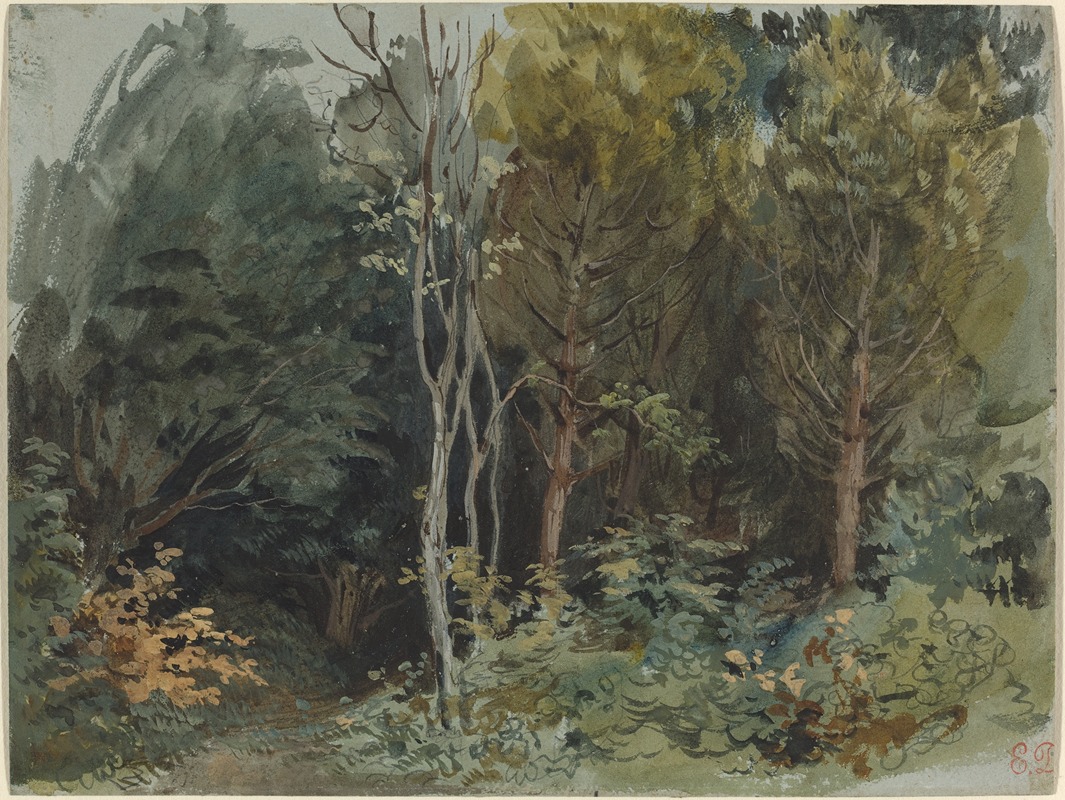
The Edge of a Wood at Nohant
A hand-painted replica of Eugène Delacroix’s masterpiece The Edge of a Wood at Nohant, meticulously crafted by professional artists to capture the true essence of the original. Each piece is created with museum-quality canvas and rare mineral pigments, carefully painted by experienced artists with delicate brushstrokes and rich, layered colors to perfectly recreate the texture of the original artwork. Unlike machine-printed reproductions, this hand-painted version brings the painting to life, infused with the artist’s emotions and skill in every stroke. Whether for personal collection or home decoration, it instantly elevates the artistic atmosphere of any space.
"The Edge of a Wood at Nohant" is a painting by the renowned French artist Eugène Delacroix. Delacroix, born on April 26, 1798, and passing on August 13, 1863, is often regarded as a leading figure in the Romantic movement in French art. His works are characterized by their expressive brushstrokes, rich color palette, and dramatic compositions.
This particular painting, "The Edge of a Wood at Nohant," was created during one of Delacroix's visits to the estate of the famous French writer George Sand in Nohant, located in the central part of France. George Sand, whose real name was Amantine Lucile Aurore Dupin, was a close friend of Delacroix and an influential literary figure of the 19th century. Nohant was her family estate, and it became a gathering place for many artists, writers, and musicians of the time.
The painting depicts a serene and picturesque scene at the edge of a forest in Nohant. Delacroix's use of light and shadow, along with his vibrant color choices, captures the tranquil beauty of the natural landscape. The composition is balanced, with trees framing the scene and leading the viewer's eye into the depth of the forest. The play of light filtering through the leaves creates a sense of movement and life within the painting.
Delacroix's technique in this work reflects his mastery of capturing the essence of nature. His brushstrokes are both bold and delicate, conveying the texture of the foliage and the dappled light on the forest floor. The painting is a testament to Delacroix's ability to infuse his landscapes with emotion and atmosphere, making the viewer feel as though they are standing at the edge of the wood themselves.
"The Edge of a Wood at Nohant" is also significant because it represents a period in Delacroix's life when he was deeply influenced by his surroundings and the people he interacted with. His friendship with George Sand and his time spent at Nohant provided him with inspiration and a peaceful retreat from the bustling life of Paris. This painting, along with others created during his stays at Nohant, showcases a more intimate and personal side of Delacroix's artistic journey.
Today, "The Edge of a Wood at Nohant" is appreciated for its beauty and its historical context. It is a fine example of Delacroix's landscape work and his ability to convey the natural world with both realism and romanticism. The painting remains a cherished piece in the collection of Delacroix's works, admired by art enthusiasts and scholars alike for its artistic merit and its connection to the artist's life and friendships.
In summary, "The Edge of a Wood at Nohant" by Eugène Delacroix is a captivating landscape painting that reflects the artist's skill in capturing the beauty of nature and his personal connections with influential figures of his time. It stands as a testament to Delacroix's talent and his contributions to the Romantic movement in art.















